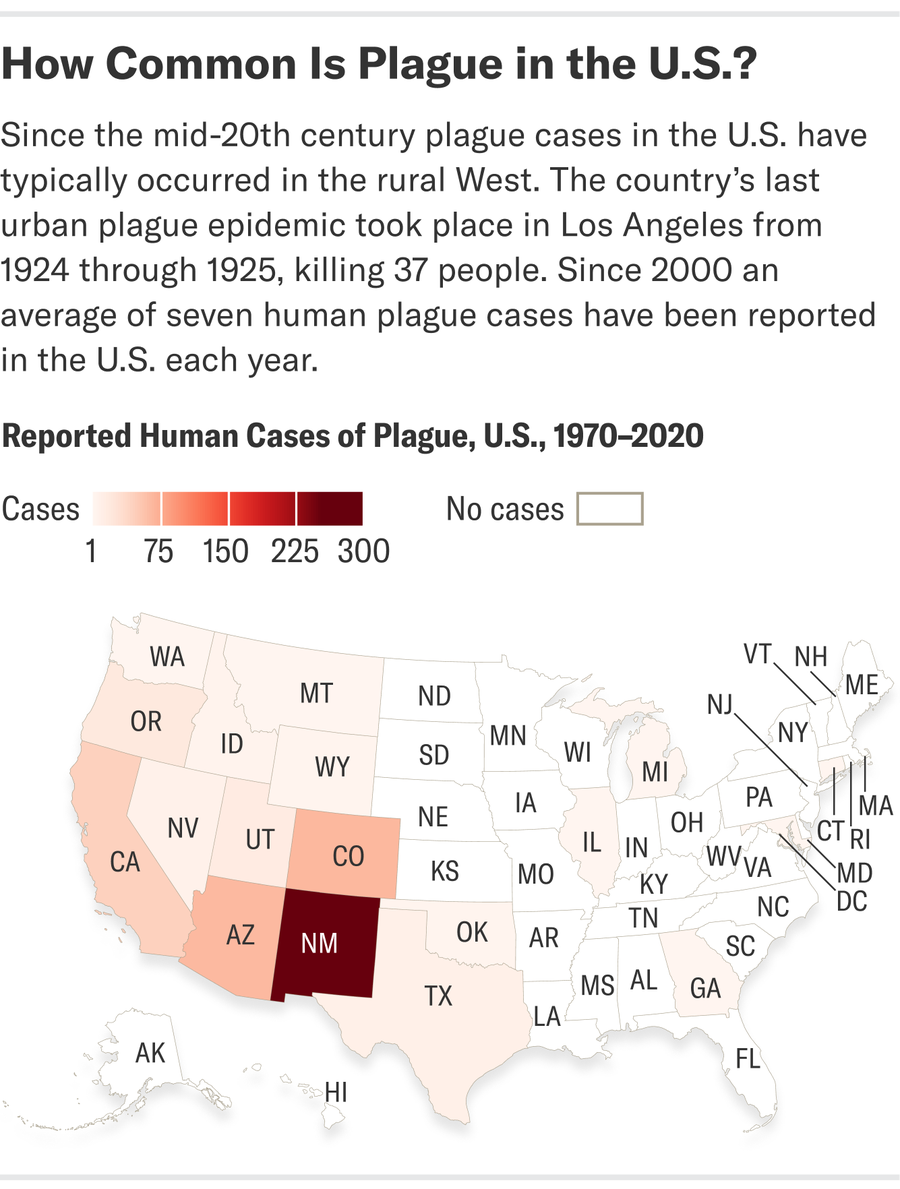Plague Still Exists. Here’s Where and How It Spreads in the U.S.
Plague infections in humans are rare, but a case in Oregon reminds us that the disease is not gone
George D. Lepp/Getty Images
Earlier this month a person in rural Oregon was diagnosed with plague—the state’s first case in eight years. According to health officials in Oregon’s Deschutes County, the person likely contracted the disease from a pet cat.
Plague is often thought of as a medieval disease, but it continues to affect people across the globe—most commonly in Madagascar, the Democratic Republic of the Congo and Peru. In the U.S. about 10 cases of plague are diagnosed per year. Most of these are reported on the West Coast and in Southwestern and Rocky Mountain states—particularly in New Mexico.

On supporting science journalism
If you’re enjoying this article, consider supporting our award-winning journalism by subscribing. By purchasing a subscription you are helping to ensure the future of impactful stories about the discoveries and ideas shaping our world today.
Plague is caused by a bacterium called Yersinia pestis. Most people know it as the microbe behind the “Black Death,” which wiped out at least a third of Europe’s population in the 14th century. Humans and the animals that travel with them have spread it to every continent except Antarctica. It most likely arrived in the U.S. on ships docking in California sometime around the year 1900.
Y. pestis can make humans extremely ill, but it doesn’t naturally thrive in human populations. Instead it lives in wild rodents. “It doesn’t make them particularly sick, and so that means it can just kind of quietly circulate in that population,” says Erin Phipps, state public health veterinarian of New Mexico. The particular rodent species that carry plague can vary from region to region, but in the U.S. it can be found in rats, prairie dogs, marmots, squirrels and, occasionally, chipmunks.
From these…
Read the full article here







